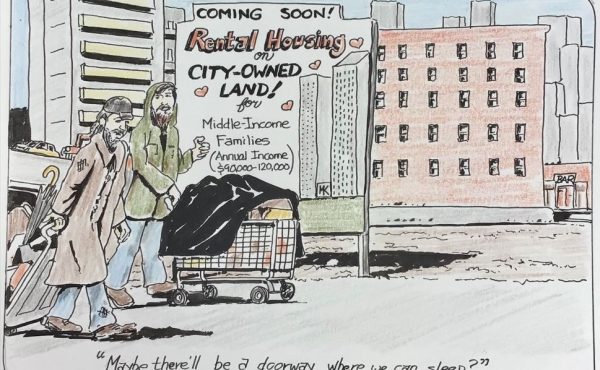If you’ve heard it once, you’ve heard it a thousand times: cities are complex. But that doesn’t mean they need to be complicated. Complexity refers to systems that are more than the sum of their interconnected parts, while something that is complicated is convoluted and difficult to understand—often resulting from the jargon and specifics of different disciplines. The built environment definitely has much of both, but we at Spacing Vancouver believe that we can help demystify some of the complications.
So, with the start of a new year, we thought it would be a great time to kick off our newest experiment: the S101 Series, a.k.a S101S. This ongoing initiative is intended to give readers a strong baseline for understanding fundamental aspects of the built landscape in a clear, accessible manner. It is going to cover a broad range of issues, from “hard” topics that are quite defined—like, what is Floor Space Ratio?—to ‘softer’ subjects that are less clear-cut, but equally important, such as affordability.
Supported by our strong contributors and access to folks in the field, we intend on explaining frequently-used urban planning jargon and exposing misunderstandings and misconceptions. This is done with the belief that, in order to collectively transform our environment for the better, all levels of society need to have a basic level from which to build our understanding. This starts with untwisting the knot of complication that has gathered over decades, if not centuries, of planning, designing, and constructing built environments.
In the spirit of our venture—and for convenience and clarity—the structure of each S101S piece will have the same format. The headline image will attempt to capture the essence of the topic. This will be followed by a very short introductory question and/or problem statement in bold text, including the necessary context. After this, readers will see the main body of the piece. This is the longest section and will cover the necessary research, background, etc. needed to address the question/problem. The piece will end with concluding bullets summarizing the key points within the main body. As the number of S101S pieces accumulates, the latter will be followed by links connecting to related pieces in the Series. All topics will be tagged S101S, for easy reference.
We believe this format will allow for both quick scanning and more in-depth reading, without losing valuable information. We hope it will be useful for the widest possible range of people, from students and passive urbanists to municipal officials and practitioners.
Although we have a decent sense of the types of topics our readers would like us to cover based on the frequent questions we’re asked, we would also like to officially call out to you, our readers, to email us topics they feel would fit the bill for the S101S. We also welcome those who want to write a piece for the Series. Please reach out to: erick@spacing.ca.
We look forward to hearing from you and seeing how S101S evolves!
***
All pieces in the S101S:
- S101 Series: Introduction and Call
- S101S: Understanding Residential Density: Why is it so Confusing?
- S101S: Understanding Residential Density: Net vs Gross Density•
- S101S: Understanding Residential Density: FSR, Building Setbacks and Height Regulations
- S101S : Understanding Shadow Studies: Why They Matter –
- S101S: What’s a Development Pro Forma—And Why Should you Care?
- S101S: Defining Public Space: The Basics
- S101S: Understanding Affordable Housing: The Trickle-Down Theory of Housing – Myths and Realities
- S101S: Describing Building Types: Why They Matter
- S101S: Describing Building Types: Formal and Use-Types
- S101S: Explaining Transit-Oriented Development: Benefits and Drawbacks
**
Erick Villagomez is the Editor-in-Chief at Spacing Vancouver.





